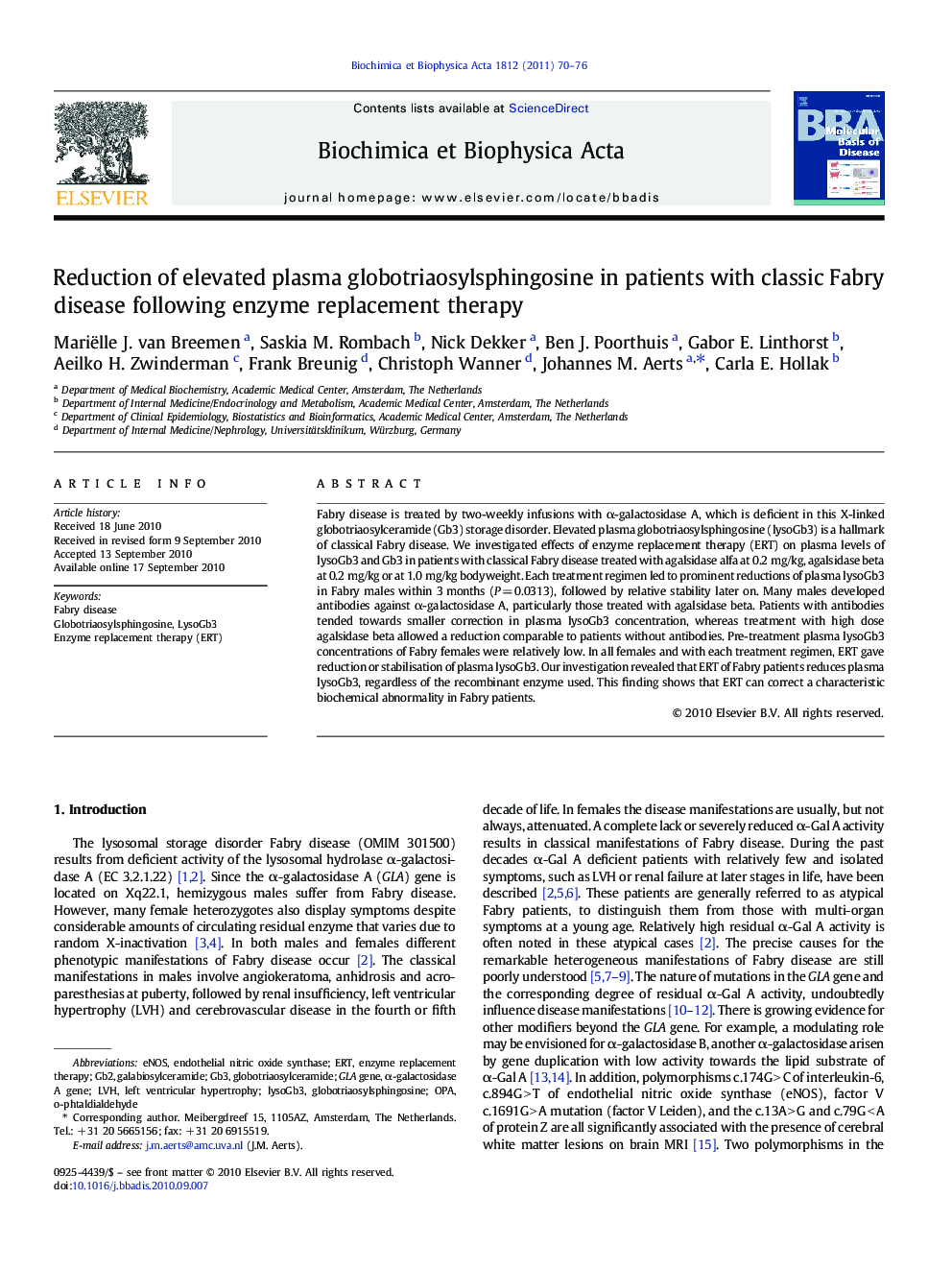| کد مقاله | کد نشریه | سال انتشار | مقاله انگلیسی | نسخه تمام متن |
|---|---|---|---|---|
| 1905283 | 1534700 | 2011 | 7 صفحه PDF | دانلود رایگان |

Fabry disease is treated by two-weekly infusions with α-galactosidase A, which is deficient in this X-linked globotriaosylceramide (Gb3) storage disorder. Elevated plasma globotriaosylsphingosine (lysoGb3) is a hallmark of classical Fabry disease. We investigated effects of enzyme replacement therapy (ERT) on plasma levels of lysoGb3 and Gb3 in patients with classical Fabry disease treated with agalsidase alfa at 0.2 mg/kg, agalsidase beta at 0.2 mg/kg or at 1.0 mg/kg bodyweight. Each treatment regimen led to prominent reductions of plasma lysoGb3 in Fabry males within 3 months (P = 0.0313), followed by relative stability later on. Many males developed antibodies against α-galactosidase A, particularly those treated with agalsidase beta. Patients with antibodies tended towards smaller correction in plasma lysoGb3 concentration, whereas treatment with high dose agalsidase beta allowed a reduction comparable to patients without antibodies. Pre-treatment plasma lysoGb3 concentrations of Fabry females were relatively low. In all females and with each treatment regimen, ERT gave reduction or stabilisation of plasma lysoGb3. Our investigation revealed that ERT of Fabry patients reduces plasma lysoGb3, regardless of the recombinant enzyme used. This finding shows that ERT can correct a characteristic biochemical abnormality in Fabry patients.
Research highlights
► Enzyme replacement therapy (ERT) corrects lysoGb3/Gb3 levels in Fabry patients.
► Plasma lysoGb3 is reduced in first 3 months upon ERT.
► Formation of antibodies reduces efficacy of lysoGb3 correction.
► Higher dosing regimen negates antibody formation effect.
Journal: Biochimica et Biophysica Acta (BBA) - Molecular Basis of Disease - Volume 1812, Issue 1, January 2011, Pages 70–76